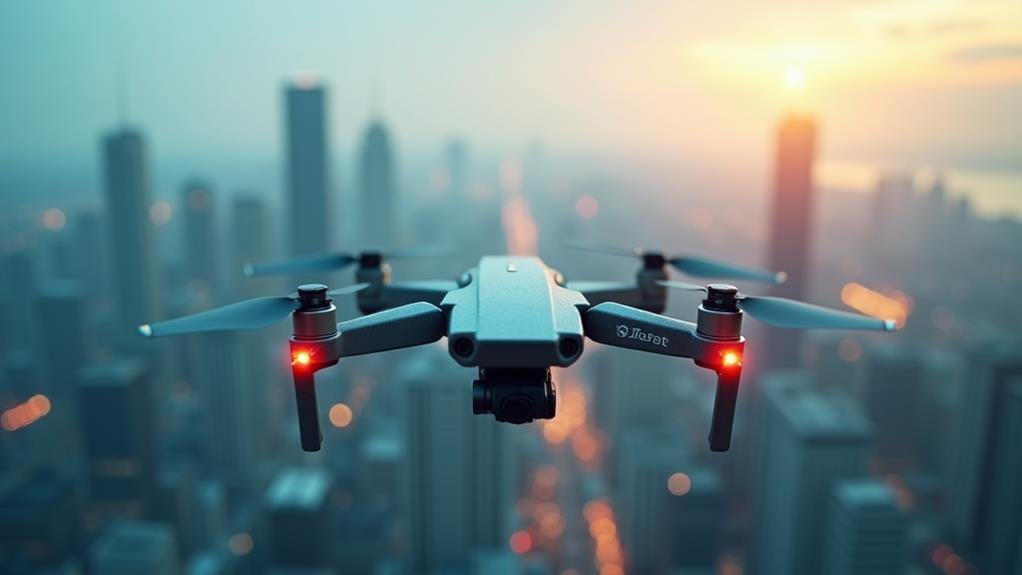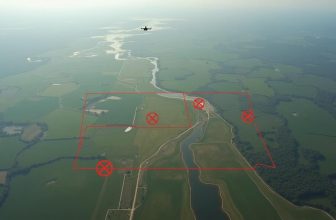
As you navigate the world of drone operations, you’re likely aware that the legal landscape is constantly shifting. Three key developments are having a significant impact on the industry: evolving airspace regulations, expanded commercial drone operations, and increased data protection measures. Regulatory bodies are refining rules to balance safety concerns with growing demand, while commercial operators are pushing the boundaries of what’s possible. But, as these developments take shape, you may be wondering how they’ll affect your own operations and what steps you need to take to stay compliant. How will these changes impact you?
Contents
Key Takeaways
- Regulatory bodies refine drone airspace regulations to balance safety with growing demand for drone operations.
- Stricter guidelines, such as enhanced pilot training, guarantee safety in commercial drone activities like BVLOS operations.
- Drone operators must comply with evolving flight restrictions, including no-fly zones, altitude limits, and right-of-way rules.
- Liability insurance is required for drone operators, covering damages to people and property in the event of an accident.
- Robust data protection measures safeguard sensitive information, complying with relevant regulations like GDPR or CCPA.
Evolving Drone Airspace Regulations
As drone technology continues to advance, how it intersects with evolving airspace regulations is a pressing concern for both regulatory bodies and drone operators.
You must navigate an increasingly complex landscape of air traffic management and flight restrictions.
Regulatory bodies are grappling with the need to balance the safety of manned air traffic with the growing demand for drone operations.
You’ll notice that airlines and other stakeholders are advocating for stricter regulations to prevent potential collisions with drones.
In response, regulatory bodies are establishing new protocols for drone detection and tracking systems.
These systems will enable air traffic controllers to identify and respond to potential drone incursions into restricted airspace.
As a drone operator, you’ll need to comply with evolving flight restrictions, which may include no-fly zones, altitude limits, and right-of-way rules.
You should also be aware of emerging technologies, such as geofencing and sense-and-avoid systems, which can help mitigate the risks associated with drone operations.
Expanded Commercial Drone Operations
Regulatory bodies’ ongoing efforts to develop and refine airspace regulations have created opportunities for commercial drone operators to expand their operations.
As a result, you can now conduct a wider range of commercial drone activities, including beyond visual line of sight (BVLOS) operations, night flights, and flights over people.
To guarantee safety, regulatory bodies have implemented stricter guidelines, such as enhanced pilot training requirements.
You must now complete more thorough pilot training programs that cover topics such as airspace regulations, weather, and emergency procedures.
Additionally, many regulatory bodies require drone operators to hold liability insurance, which can cover damages to people and property in the event of an accident.
You should explore various insurance options to guarantee you have adequate coverage for your specific operations.
Some insurance providers offer tailored policies that cater to the unique needs of commercial drone operators.
Increased Data Protection Measures
Increased Data Protection Measures
With the increasing use of drones in commercial operations, you’re capturing and transmitting vast amounts of data, from aerial images to sensor readings.
As a result, you must implement robust data protection measures to safeguard sensitive information and prevent unauthorized access.
To address data protection concerns, you should establish and maintain effective cybersecurity protocols.
This includes encrypting data in transit and at rest, using secure communication channels, and implementing access controls to restrict data access to authorized personnel.
Additionally, you should implement privacy safeguards to protect personal data, such as images of individuals or sensitive locations.
You must also comply with relevant data protection regulations, such as the General Data Protection Regulation (GDPR) or the California Consumer Privacy Act (CCPA).
This includes providing transparency into your data collection and processing practices, obtaining consent from individuals when necessary, and responding to data subject requests.
FAQs: Legal Landscape of Drone Usage
Can Drones Be Used for Recreational Purposes in National Parks?
You are allowed to use drones for recreational purposes in national parks, but you must comply with national regulations and obtain park permits before flying, as these permits guarantee you follow specific rules and guidelines.
Do I Need Insurance to Operate a Commercial Drone?
Don’t fly blind into the world of commercial drone operations. You’ll likely need insurance, as Drone Liability can be costly. Consider Commercial Coverage that mitigates risks, protecting your business from financial fallout in case of accidents.
Can I Use a Drone to Capture Photos of Private Property?
When capturing photos of private property, you must respect property boundaries and obtain consent from owners. Without permission, aerial surveillance may infringe on rights, so you should verify you have the necessary approvals or follow applicable exemptions.
How Do I Register My Drone for Personal Use?
You’ll register your drone for personal use by following the FAA’s registration process, which requires you to pay a drone fee of $5, provide your drone’s make and model, and receive a unique identifier.
Are Drones Allowed in Areas With Temporary Flight Restrictions?
When you’re planning to fly a drone, you must check for temporary flight restrictions in that airspace management area. You’ll need to avoid restricted zones, such as those near emergencies or national events, to comply with regulations.
Conclusion
As the drone industry takes flight, three key developments are charting its course. Evolving airspace regulations are striking a delicate balance between safety and innovation. Commercial drone operators are expanding their horizons, pushing the boundaries of what’s possible. Meanwhile, robust data protection measures are the unsung heroes, shielding sensitive information from prying eyes. Like a puzzle, these pieces are falling into place, forming a landscape that’s both dynamic and secure.






